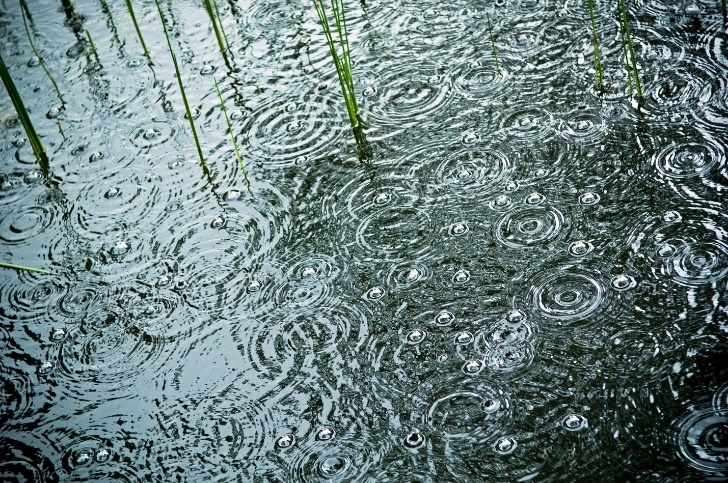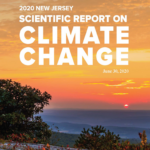
CLIMATE SCIENCE
Climate Science
Research focused on New Jersey and the Northeast region are vital to understanding the statewide impacts of climate change. In this section, we provide studies and information detailing our scientific understanding of the effects and impacts of climate change that are relevant to the State. Click the links below to learn more.
For a more comprehensive list of ongoing and completed research, please visit the Division of Science and Research website.
Climate Change in New Jersey: Impacts and Effects
This key resource builds on the findings of New Jersey’s 2020 Scientific Report on Climate Change by presenting the updated materials in a streamlined digital format for all audiences. Here you can find regularly updated summaries of climate change research findings relevant to New Jersey. This resource covers a range of effects and impacts, including the drivers of climate change, temperature, precipitation, sea-level rise, ocean acidification, marine ecosystems, freshwater, land, carbon sequestration, and human health and communities.
New Jersey Scientific Reports
2020 New Jersey Scientific Report on Climate Change
DEP’s first scientific report on climate change summarized the current state of knowledge regarding the effects of climate change on New Jersey’s environment to inform state and local decision-makers as they seek to understand and respond to the impacts of climate change. This report identified and presented the best available science and existing data regarding the current and anticipated environmental effects of climate change globally, nationally, and regionally.
2022 Climate Change Impacts on Human Health and Communities: Addendum to the Scientific Report on Climate Change
New Jersey produced a comprehensive report on the impacts of climate change on human health and communities by adding a human health addendum to its 2020 New Jersey Scientific Report on Climate Change. Understanding how these new environmental challenges will directly and indirectly affect New Jersey residents is essential to establishing strategies that can effectively and equitably protect and improve health outcomes throughout our State.
New Jersey-Specific Rainfall Studies
The New Jersey Department of Environmental Protection released two studies by the Northeast Regional Climate Center (NRCC), a National Oceanic and Atmospheric Administration (NOAA) partner, which confirmed increases in precipitation across New Jersey over the last 20 years, and projected further increases in precipitation intensity through the end of this century due to climate change. To visualize these projected increases in extreme precipitation intensity, check out the New Jersey Extreme Precipitation Projection Tool. A third study was completed by the New Jersey State Climatologist and Rutgers University, which showed historic precipitation patterns in New Jersey and how the State’s annual precipitation has significantly increased since rainfall records began.
Projected Changes in Extreme Rainfall in New Jersey based on an Ensemble of Downscaled Climate Model Projections (2021)
Report | Supplemental Data Tables
Changes in Hourly and Daily Extreme Rainfall Amounts in NJ since the Publication of NOAA Atlas 14 Volume (2021)
Additional Materials from the NRCC 2021 Studies
Fact Sheet | Science Advisory Board Peer Review Comments
Examining Precipitation Across the Garden State From 1900 to 2020 (2022)

Tools and Resources
New Jersey Extreme Precipitation Projection Tool
As part of its commitment to making the State more resilient to the impacts of climate change, the DEP launched an online tool that will help planners, local governments, developers, and residents better understand that extreme precipitation events are increasing, as confirmed by recent studies by the Northeast Regional Climate Center. Improved understanding will help decision-makers and the public take informed actions necessary to adapt to a changing climate.
New Jersey-Specific Urban Heat Island (UHI) Mapping Resource
The Urban Heat Island (UHI) Effect is a known phenomenon where urbanized areas (such as cities) are disproportionally hotter than rural areas. Causes for the UHI effect include lack of vegetation and water bodies, an abundance of hard and dry surfaces that can absorb and retain sunlight, such as buildings and sidewalks, and heat generated through human activities (such as driving vehicles, using equipment or tools). In addition, humid and densely populated areas often experience the greatest difference in temperatures between urban and non-urban places. To identify these UHI areas throughout New Jersey, DEP used Landsat 8 and 9 satellite imagery provided by the United States Geological Survey (USGS), and developed a web application to visualize land surface temperature (LST) values for New Jersey from the summer of 2022. This web app allows users to view the surface temperature values within specific areas of interest (address, municipality, county) at a resolution of approximately 1002 ft, and land surface temperature within and surrounding New Jersey’s designated overburdened communities.
Climate Change Research and Data Gaps
NJDEP has identified and created a list of known climate change research and data gaps. Filling these gaps will expand our understanding of the potential impacts from climate change and help identify ways to respond and mitigate the effects.

